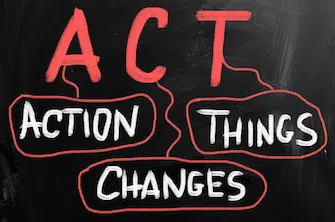You've diligently planned for a crucial coaching conversation with someone. You're prepared to talk directly about their need to improve performance, their current challenges and the necessary changes they need to make to improve their effectiveness.
But what happens too often? The real conversation that needs to take place doesn't really happen. Yes, you meet and talk. But the flow of the conversation leads you to begin talking in sweeping generalities about the intended topic.
You talk about "how things used to be" or "how things were at their old company." Far too often, you end up having a coaching conversation about someone not even in the room.
You end up leaving the conversation without any meaningful outcomes on important issues that will serve your organization or the person being coached. You mutter, "Boy, that sure didn't go the way I planned."
This happens simply because it's much safer and there's less accountability for the person being coached. A simple and direct way is to improve the quality of your coaching conversations through the use of a powerful coaching model — The Model of Immediacy.
The fundamental shift that needs to take place in your coaching conversations is to bring the focus of the conversation back "inside the lines" of the model. You create a bias toward action and strengthen the individual being coached when your coaching conversations move from:
- Then to NOW
- General to SPECIFICS
- There to HERE
- Them to YOU
Re-frame Conversations
The Model of Immediacy requires a "here and now" orientation for the "leader-coach." It requires a strong active presence with the courage to speak openly and to provide direct feedback when needed. Here are a few examples of the model in use during coaching conversations.
Getting into the Now
When you find the conversation drifting back in time, redirect and bring it "back into the now." Far too much time is spent looking backward in the rear view mirror when the real focus of a "leader-coach" is to anchor their client on what is happening today.
Employee: "Expectations were really different under the old leadership team."
Leader-coach: "That was how it was then. Let's talk about what the expectations are now."
Get Specific
When the other person uses general statements, use specifics in your questions to re-frame and provide clarity. Your goal is to limit "aboutisms" that often time sound good, but don't provide the needed clarity about the topic at hand.
You need to move from a place where you think you know what someone is talking about to where you know specifically what is on their mind.
Employee: "The Company's new bonus program isn't fair."
Leader-coach: "Can you give me a specific example of what's not fair about the program?"
Talking About You
When the person being coached brings the focus on someone "not in the room", it is important for the leader-coach to redirect the conversation and bring it back to the person being coached to provide personal accountability:
Employee: "I'm frustrated. My store managers don't get it. They fail to maximize our key promotions and as a result we are always at the bottom of the Region's reports."
Leader-coach: "This is an important topic. Let's talk specifically about you and what you are doing to improve your team's execution & performance of key promotions?"
Your Turn
How competent and confident are you in creating "immediacy" in your coaching conversations? Target the areas where you know you need to improve. With whom do you need to add immediacy to your coaching conversations?
Make a plan to meet to talk to them — today, this week, this month.
 Mark Lindstrom is the founder of Make Your Mark Executive Coaching and Consulting. He helps leaders achieve breakthrough performance. Visit makeyourmarkec.com for additional information.
Mark Lindstrom is the founder of Make Your Mark Executive Coaching and Consulting. He helps leaders achieve breakthrough performance. Visit makeyourmarkec.com for additional information.


 Mark Lindstrom is the founder of Make Your Mark Executive Coaching and Consulting. He helps leaders achieve breakthrough performance. Visit
Mark Lindstrom is the founder of Make Your Mark Executive Coaching and Consulting. He helps leaders achieve breakthrough performance. Visit 

